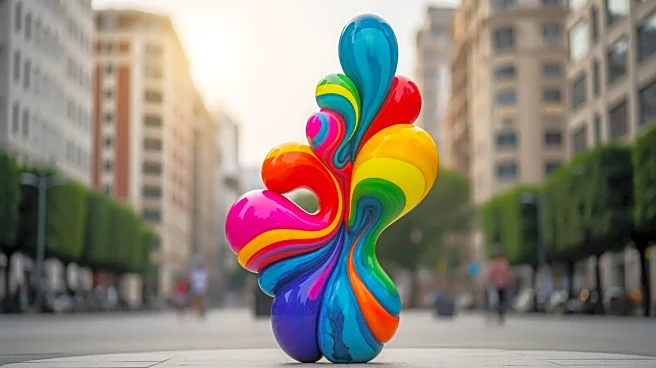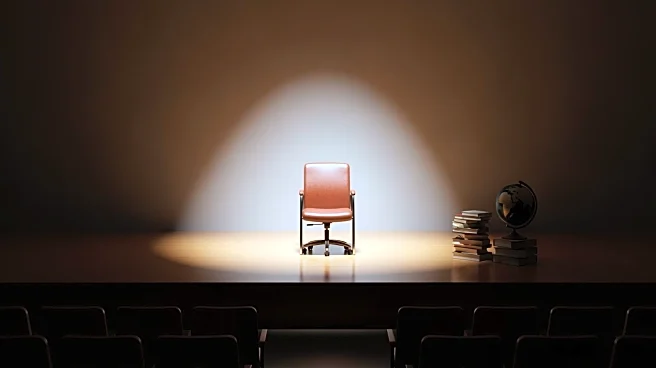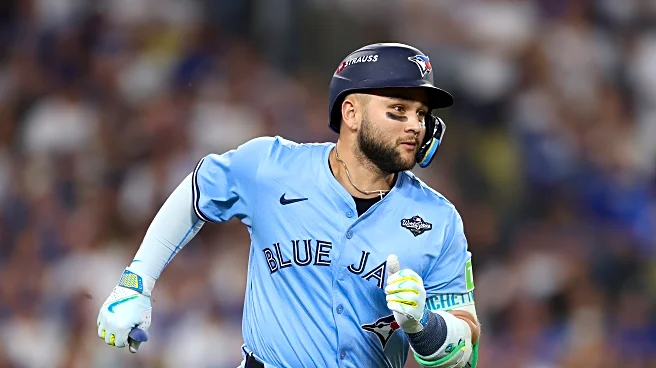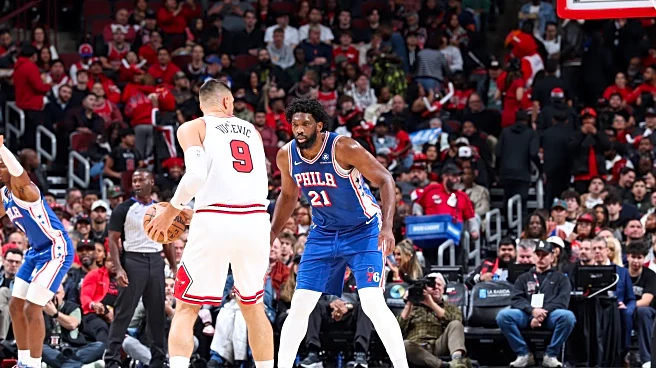What's Happening?
Boston has recently welcomed a new sculpture by the late Italian designer Gaetano Pesce. The artwork, titled Double Heart, stands 30 feet tall and is located at Lyrik Back Bay. This sculpture is Pesce's only permanent outdoor piece in the United States
and is expected to become an iconic part of Boston's public art scene. Commissioned by Boston-based developer Samuels and Associates, Double Heart is situated atop a CitizenM hotel and other commercial spaces, enhancing the city's architectural landscape. The sculpture was designed to maintain the sunset view previously offered by the site, reflecting the community's input. Goodman Taft, an art curatorial firm, played a key role in selecting Pesce for this project, emphasizing the artwork's ability to connect neighborhoods and embody energy and happiness.
Why It's Important?
The installation of Double Heart in Boston signifies a major addition to the city's public art offerings, potentially elevating its cultural status. As Pesce's final public artwork, it carries historical significance and showcases his unique approach to art and design, characterized by bold colors and innovative materials. The sculpture's presence may attract art enthusiasts and tourists, boosting local businesses and contributing to the city's economy. Furthermore, it serves as a symbol of love, empathy, and creativity, offering a positive message during challenging times. The collaboration between developers, curators, and Pesce's estate highlights the importance of community engagement and artistic legacy in urban development.
What's Next?
The unveiling of Double Heart is likely to spark discussions about the role of public art in urban spaces and its impact on community identity. As Boston continues to develop its public art scene, other cities may look to this project as a model for integrating art into urban planning. The sculpture's reception by locals and visitors will be crucial in determining its long-term influence on Boston's cultural landscape. Additionally, the success of this project may encourage further collaborations between developers and artists, fostering innovation and creativity in public spaces.
Beyond the Headlines
Double Heart's installation raises questions about the intersection of art, design, and urban development. It challenges traditional notions of public art by prioritizing community input and embracing contemporary materials. The sculpture's creation process, involving Pesce's estate and studio staff, underscores the importance of preserving artistic legacy and ensuring continuity in creative endeavors. As cities increasingly recognize the value of public art, projects like Double Heart may inspire new approaches to cultural investment and community engagement.















